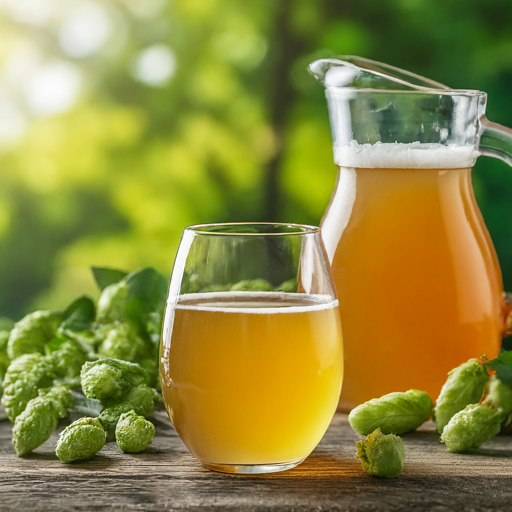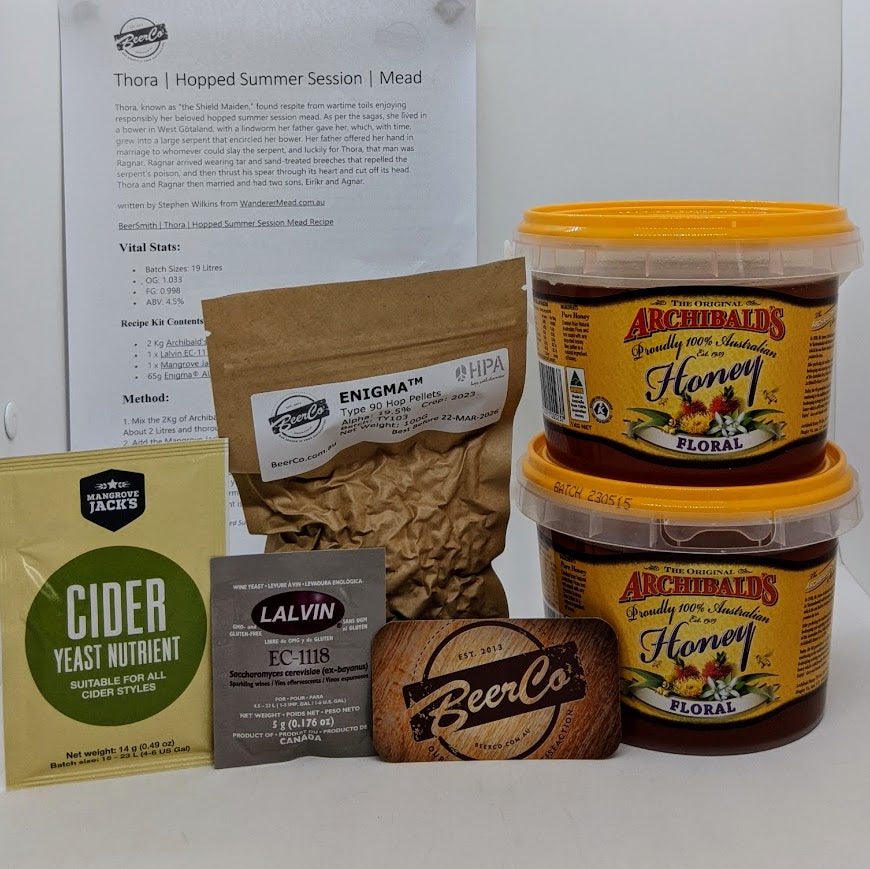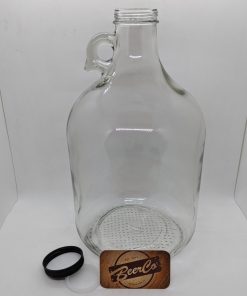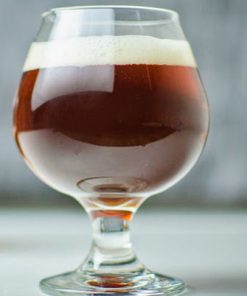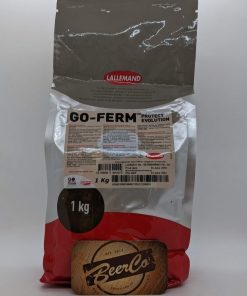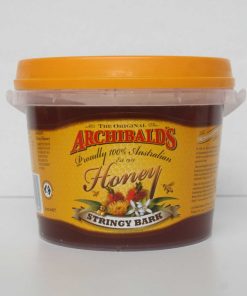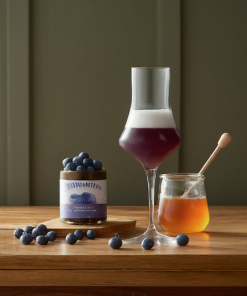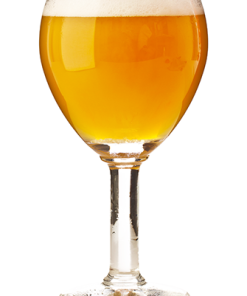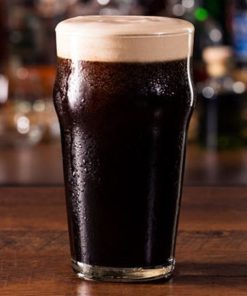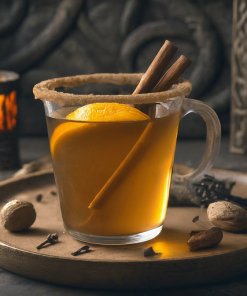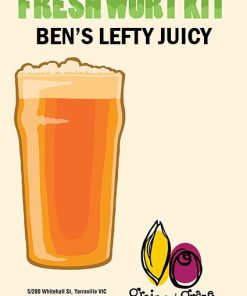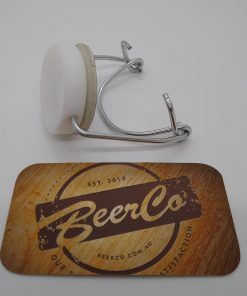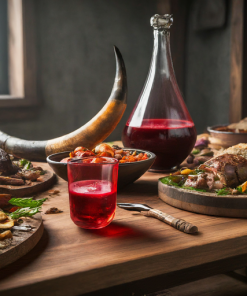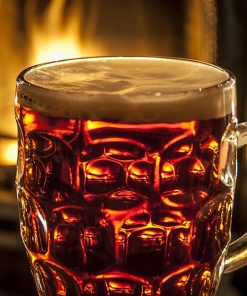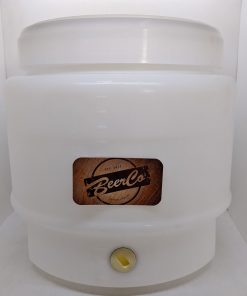Thora | Hopped Summer Session | Mead Recipe Kit BeerCo.au
$ 59,95 $ 29,98
Thora, known as “the Shield Maiden,” found respite from wartime toils enjoying responsibly her beloved hopped summer session mead. As per the sagas, she lived in a bower in West Götaland, with a lindworm her father gave her, which, with time, grew into a large serpent that encircled her bower. Her father offered her hand in marriage to whomever could slay the serpent, and luckily for Thora, that man was Ragnar. Ragnar arrived wearing tar and sand-treated breeches that repelled the serpent’s poison, and then thrust his spear through its heart and cut off its head. Thora and Ragnar then married and had two sons, Eiríkr and Agnar.
Thora | Hopped Summer Session Mead Recipe
written by Stephen Wilkins from WandererMead.au
BeerSmith | Thora | Hopped Summer Session Mead Recipe
Vital Stats:
- Batch Sizes: 19 Litres
- OG: 1.033
- FG: 0.998
- ABV: 4.5%
Recipe Kit Contents:
- 2 Kg Archibald’s Honey | Floral
- 1 x Lalvin EC-1118 Yeast
- 1 x Mangrove Jack’s | Cider Yeast Nutrient
- 65g Enigma® AU Hops
Additional Ingredients and Equipment Required:
- Plastic Fermenter and Natural Tap
- S-Type Airlock Bubbler and Grommet for Airlock
- Hydrometer
- Digital Pocket Thermometer
- 250ml Glass Measuring Cylinder
- Easy Siphon
- 10mm Hose Tubing (Approx. 3m)
- Blue Bottler with Spring
- Dextrose or Sugar for bottle or bulk priming
- 1 Spoon for Stirring
- 500mL Glass Swing Top Bottles or Kegging equipment
Method:
1. Mix the 2Kg of Archibald’s Floral Honey into hot water you have just boiled. About 2 Litres and thoroughly mix it. (This is easier if the honey is runny.)
2. Add the Mangrove Jack’s | Cider Yeast Nutrient and the stir this in. Top up to 19 litres with cold water. (As you fill this you really need to aerate the must. Give it a really good mix. Use your Spoon for Stirring or something like a Stainless Steel | Drill Powered Mash Stirrer & Mixer | 1/4 Inch Hex Drive. Alternatively shake like crazy!)
3. Rehydrate the yeast while you are shaking and mixing and aerating the must. Add it in. You should keep the fermenter at around 20°c The ferment should take about a week. (Make sure the ferment is complete. Take a gravity reading. It needs to be 0.998 or thereabouts consistently for 2-3 days. Never bottle before the fermentation is complete!!!)
4. Dry hopping process. If you are fussy about hop particulates in your mead, sterilize a hop bag and add the hops to that before adding into the Mead. After about two-three days the hop character will be added. (If you do use the bag make sure you allow the hops lots of space. The name of the game here is surface area.) Alternatively just chuck the pellets in. They will sink after a few days. Careful racking keeps most in the fermenter. If you have a large fridge or fermentation temperature control crash cold conditioning will assist with dropping the hops to the bottom of your fermenter along with the yeast and help clarify your mead.
5. Kegging or Bottling. This is where another fermenter is useful. If you bulk prime go for 7g/L of BeerCo Manufacturing White Sugar. This will give you a gentle carbonation. Otherwise Carbonation Drops at the rate of one per can / stubbie or two per tallie / 750mL Bottle. If Kegging, no need to prime, simply clean and rinse and sterilise and keg as per normal.
6. Leave the filled cans/bottles for 2 weeks or so to carbonate.
NOTE:
– Everything that touches the honey and eventually mead at all stages throughout the process must be clean, rinsed and sanitized to avoid infection.
– This is a dry hopped session mead. If you prefer sweet or semi-sweet Mead you may like to backsweeten post fermentation.
STABILISATION AND BACK SWEEENTING:
Thora is intended to be a dry hopped mead. The following is a brief outline on two different methods in order to achieve this.
METHOD 1:
1. Confirm your mead has finished fermentation via a gravity reading of ≤ 1.000. Ideally, this will be done once your mead has cleared.
2. Crush four Campden Tablet (Potassium Metabisulfite) into a powder. Then using a scale that can accurately measure down to 0.01 decimal places weigh out 5g of Potassium Sorbate.
3. Take a small sample of the mead and stir until both additives have completely dissolved.
4. Pour the sample into an empty 19 litre demijohn or fermenter or carbouy and rack your mead on top of it.
5. Allow at least 24 hours to pass before weighing out 350g of honey.
6. Pour the honey into the mead and gently stir until combined, taking care not to cause a whirlpool or aerate the mead. If after 5 or so minutes of slowly stirring there is still some undissolved honey don’t worry about it, this will sort itself out over the next couple of days.
7. Take a gravity reading before replacing the airlock – It should be right round 1.020.
8. Give your mead at least a week before confirming fermentation has not restarted. If the gravity matches what it did a week prior, you can move onto bottling.
WARNING: If you do not have all the established ingredients/ equipment in order to safely perform stabilisation via chemical additives DO NOT attempt to add additional honey into the demijohn – you will restart fermentation. Bottling while yeast are actively fermenting will cause bottles to explode, risking hospitalisation.
METHOD 2:
1. Ideally, once your mead has cleared, bottle as per step 13.
2. When you’re ready to drink some mead, go grab some of your favourite honey from the cupboard
3. Pour your mead into a glass (Serving Suggestion: 150ml).
4. Spoon out about ½ tsp‡ of honey and stir into the mead.
5. Consume the Nectar of the Gods!
‡Adjust the amount of honey according to taste.
Knowledge Resource and Further, Listening, Reading & Watching about dry hopped Session Meads:
- How to Make a Hopped Blueberry Session Mead (Super Crushable!)
- Dry Hopped Sparkling Mead – Basic Brewing Video – January 29, 2021
Fast shipping and professional packing
We offer a wide range of shipping options due to our long-running partnerships with UPS, FedEx and DHL. Our warehouse staff are highly trained and will package your items according to our precise and precise specifications. Before shipping, all goods are thoroughly inspected and securely secured. Every day we ship hundreds of packages to our customers from all over the world. This is a sign of our commitment to be the largest online retailer worldwide. The warehouses are located situated in Europe as much as they are in USA.
Note: Orders containing multiple items will have a different processing period for each item.
Before shipping the items, our staff will carry out an extensive inspection of the products you have ordered. The majority of orders are delivered within 48 hrs. The delivery time should be between 3-7 working days.
Returns
We don't manage the stock in our factory and warehouse. Actual stock levels may fluctuate at any moment. Be aware that it's possible that your order will be out of stock after you have placed the order.
Our policy is for 30 days. Unfortunately, if 30 days have passed from the date you purchased the product, we are unable to offer you a return or exchange.
The item must not be used, and it must be in the original packaging. It must also be in the original packaging.
Related products
Equipment
Equipment
Yeast
Equipment
Equipment
Equipment
Equipment
